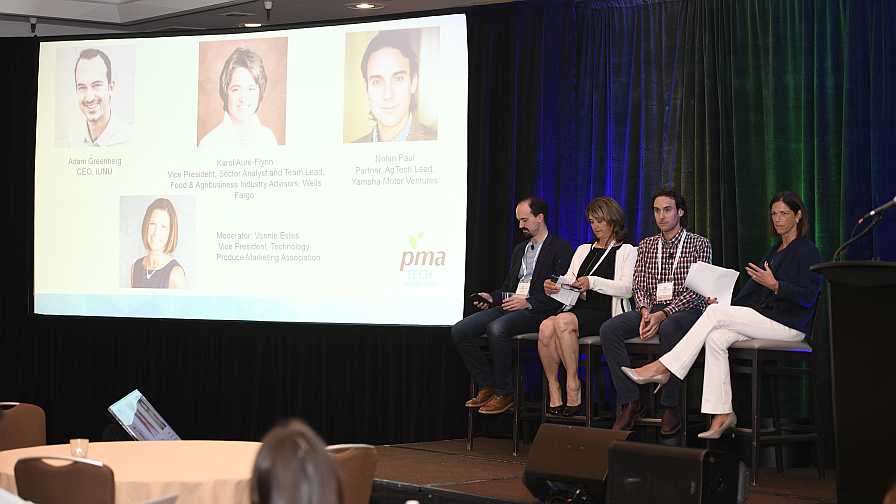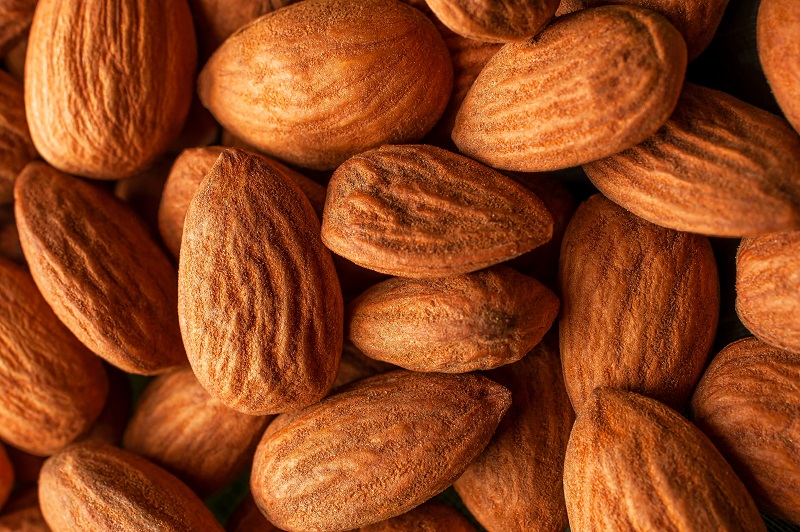Here Are the 5 T’s of Tech Knowledge for the Produce Industry

Produce Marketing Association’s 6th Tech Knowledge industry event served up fruitful discussions covering multiple topics including crop inputs, postharvest, food safety, and more.
Photo courtesy of PMA
What do you need to do or know about the latest technology for agriculture? What will it take to position yourself for success? These and other topics were part of the Produce Marketing Association’s (PMA) sixth Tech Knowledge conference recently held in Monterey, CA.
Between jumping on and off stage, I learned from our great speakers and our attendees. Here are my takeaways, or the Five T’s from Tech Knowledge.
1. Technology
The event covered technology from crop inputs, postharvest, food safety, and the last mile to the consumer. Most every speaker mentioned the need for collaboration across the supply chain to develop solutions to our biggest issues.
One such collaboration is ‘High Rise‘ broccoli by Seminis Vegetable Seeds, part of Bayer’s Crop Science Division and winner of this year’s PMA Science & Technology Circle of Excellence Award. Developed in collaboration with growers and processors who face a critical shortage of skilled labor, ‘High Rise’ requires fewer harvest passes, and its height makes it suited for time-saving machine harvesting.
The development of apple harvesting robots by Abundant Robotics in collaboration with apple tree training was another effort discussed. The investment and cooperation across the strawberry industry in Harvest CROO for the development of strawberry harvesters also was mentioned.
In addition, Ranveer Chandra from Microsoft presented the fantastic technology Microsoft is developing across the supply chain. Check out what they are up to in cooperation with the industry.
2. Transparency
Seana Day of The Mixing Bowl called it the “T” word. Consumers want it; retailers are promising it. Supply chain actors don’t always benefit from transparency due to pricing pressures. The biggest challenge in transparency to the consumer is what Day calls “the messy middle.”
Investment is flowing to tech for solutions in crop production and to the consumer when they acquire food, but the middle is underfunded and ripe for disruption. Consumers are demanding transparency for food safety and want to know where their food comes from. Expect people like Day to invest and help develop IT solutions that will support transparency in the supply chain as interest shifts from the field to beyond the farm gate.
3. Talent/Training
Labor, labor, labor. It is the biggest topic at any ag tech event if producers are present. We can’t find enough labor for harvesting and packinghouse operations. The labor we find is demanding, getting increasingly higher wages, and we don’t have enough young people with college training in a variety of fields coming into agriculture.
Center for Growing Talent (CGT), a nonprofit by PMA, brought 16 students to Tech Knowledge. The students brought excitement and great questions to the event.
CGT and other programs are working to attract and retain talent in our industry. The need for people trained in tech is increasing as the use of digital tools with data analytics become more commonplace in organizations. Companies like IBM and many community colleges in rural areas are developing one- to two-year programs to serve this need in all industries. Our digitized industry is supporting and utilizing these programs to meet the growing talent needs.
4. Trust in our Food
Trust in our food supply chain is a big topic in the wake of the various foodborne illness cases in the past year. As PMA’s Chief Technology Officer Bob Whitaker said, “The industry must leverage the scientific knowledge base to understand and manage foodborne pathogens.”
We need to do root cause analysis to prevent illness. The industry is cooperating through organizations and task forces like the Romaine Task Force and Center for Produce Safety to develop tools and training for food safety. We need to communicate to the consumer that we are putting safety measures in place to protect them and not teach the consumer to be afraid of our product.
5. Take Time to Think
Lastly, both Day and PMA’s CEO Cathy Burns talked about technology adoption in our companies. Day quoted Michael Gerber, author of “The E-Myth Revisited,” urging leaders to “work on the business, not in the business.” We are at a pivotal point in many of the parts of produce business, and our path forward needs to be thoughtful. Burns talked about taking time to think about our businesses and then take action on adopting technology “or we will be left behind.”
Stay tuned, as there is more to come with the 5 Ts of Tech Knowledge. The Science in Technology group at PMA is hosting regional events this year and looks forward to hearing about your 5 Ts.










